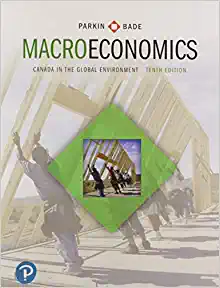Question
In your responses , comment on the posts of at least two peers whose simulations had different outcomes than your own. Research and provide examples
In your responses, comment on the posts of at least two peers whose simulations had different outcomes than your own. Research and provide examples of companies in the news that are relevant to your peers' comments on the value of comparative advantage for making their business decisions.
Me
As a business owner, I would determine opportunity costs and comparative advantage by analyzing my resources to produce various products and services to determine opportunity costs. Opportunity cost is the expense incurred by not selecting the optimal option. I can choose which product has a more significant opportunity cost by analyzing its potential benefits.
When a country or company produces a product or service at a lower potential cost than another, it has a comparative advantage. By identifying my company's comparative advantage, I can strategically determine what to manufacture and whether to trade.
The production possibility frontier (PPF) model graphically illustrates manufacturing tradeoffs between two products. The PPF curve indicates the utmost quantity of one good that can be produced for any level of the potential production of the other good. By identifying the opportunity cost of making one product over another, the PPF model assists businesses in deciding between specialization and trade.
By examining the PPF curve, a company can determine its comparative advantage in manufacturing products and services and make trade decisions based on future benefits and opportunity costs. For example, a company can produce more of a particular good at a lower opportunity cost. In that case, it may specialize in that good and trade with other companies for products with a higher opportunity cost.
Whitney posted
If I were to own a business, it would be a Laundromat. As a business owner, evaluating opportunity cost and comparative advantage would be very essential. Opportunity cost is the loss of what I can get from having customers pay for all services. For instance, free was on Tuesday and free pick up and drop off on Wednesday. This is both time and money when it comes to opportunity cost.
Comparative advantage is equally important as opportunity cost. A comparative advantage would be to have free soap and free dry services one day of the week, which would have customers running due to the fact they would rarely find this around the city. This would cause the business to earn more money on weekly basis. So, a great example would be to prefill little caps with soap for when the customers come in versus them going to another laundromat and paying top price for laundry detergent.
Finally, the production possibility frontier is a graph that shows combinations of two goods that can be produced when resources shift. An example of this would be the simulation that I have conducted below.
Jessica posted
In the simulation I opened up the Best Burger in Town Cafe. Now with my first simulation without trade I noticed I can make more burgers in a one minute span than fries. I then have to take into consideration what is making the business the most profit. A La Carte burger sales? Fry sales? Or Combinations? For this I would say my combos are selling the best. Therefore I am not going to want to give up my time on just burgers and I do not want to give up time on just fries. I needed to find a middle ground where I can optimize the amount of combos I can sell with little opportunity cost, which is wasting my time not producing combos, I came to an agreeable 80 combos in my allocated 30 minutes. 20 minutes on burgers and 10 minutes on fries.
As far as comparative advantage goes I have already concluded I make more burgers in the same amount of time it takes me to make one fry. So using the same allocated time I need to find a way to produce just as many burgers while making more fries to complete my combos. I utilized the trading with another burger joint to help me achieve my goals. Not knowing what their production time is, I had to trade off a few fries to receive more hamburgers from them so I could use more of my time producing fries instead of burgers. This ultimately gave me 4 more combos made with trade than I had without trade.
As far as looking at a PPF model this would help make more business decisions if I came across more variables. Such as say I got one more fryer to make French fries which would increase my fry production but would this affect my burger production or would it stay the same? The chart would help me to see how different events would change my production for both products and help me to make the appropriate adjustments to stay on track with producing as many combos as I already know I can and continuing an increase in productions.
Step by Step Solution
There are 3 Steps involved in it
Step: 1

Get Instant Access to Expert-Tailored Solutions
See step-by-step solutions with expert insights and AI powered tools for academic success
Step: 2

Step: 3

Ace Your Homework with AI
Get the answers you need in no time with our AI-driven, step-by-step assistance
Get Started


